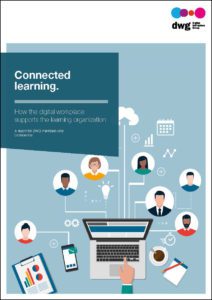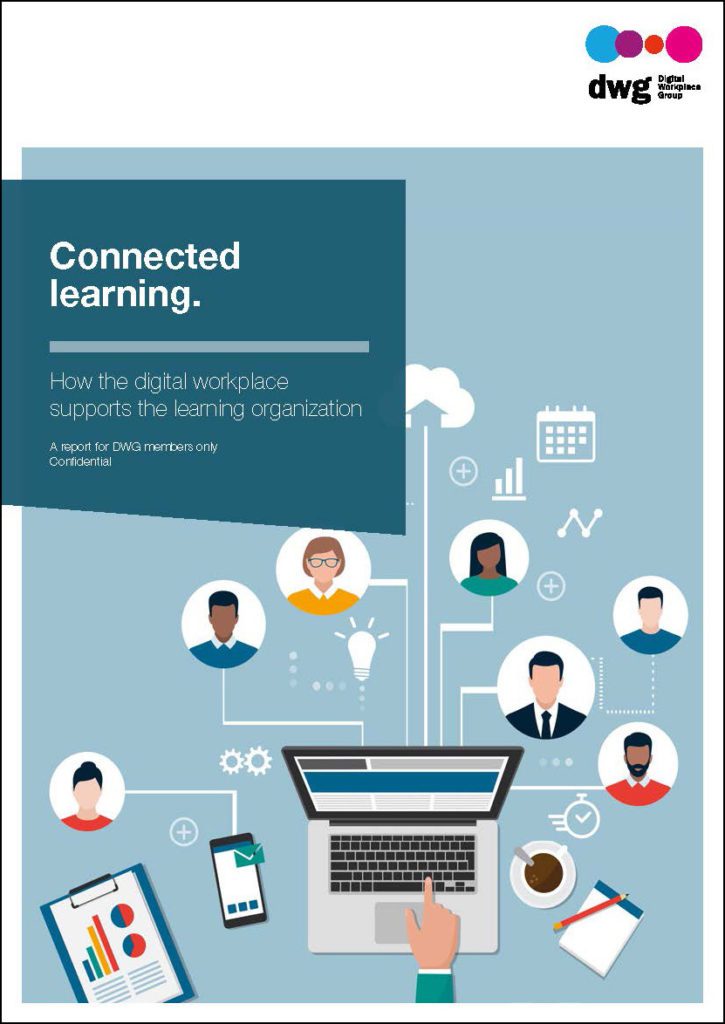Connected learning: How the digital workplace supports the learning organization
Technology isn’t just constantly evolving and changing the ways in which we work; it is also changing how we learn. Many of us only experience learning technology in the form of the occasional piece of mandatory training, probably delivered through a learning management system (LMS), and don’t really consider the rapidly growing industry that is continually integrating new tools that aim to help people learn.
It might seem logical that e-learning and the digital workplace would be close companions. We use these tools on the same devices, they’re built on the same web technologies, and they follow similar principles around user experience, quality of content and accessibility. Sadly though, the reality is very different. Intranets and learning experience platforms often coexist with little more than the occasional link to a training module or a vague instruction to search for a relevant team or document on the intranet.
There’s a notable difference in the size of the digital workplace and learning technology markets at $20–30bn and $360bn respectively. More anecdotally, learning exhibitions and conferences are substantially larger than those for intranets and the workplace experience.
As technology changes and the workplace tries to keep up, demand for training will continue to grow. The World Economic Forum predicts that 42% of core skills required to perform existing jobs will become outdated, while employers require new skills such as machine learning or information security alongside more human skills such as problem-solving and self-management.
Clearly, every employee needs training, and skills development is essential to both generating value and developing corporate culture as our workplaces continue to change.
The DWG member report Connected Learning: How the digital workplace supports the learning organization, looks beyond the factors driving this convergence of technologies towards some of the benefits. These include:
- optimizing data-driven planning of work and staffing, even, for instance, being able to predict the risk of train delays by measuring the skills of the teams involved
- reductions in costs associated with wasted face-to-face training by ensuring that employees are ready to go on offered courses – mediated by an attractive low-code evaluation tool
- demonstrating how lectures can become multimedia mines of information accessible asynchronously to all participants, while chatbots can point enquirers towards already-resolved solutions or connect them to an adviser
- helping new employees to feel properly integrated into a global organization by using a comprehensive onboarding process
- using AI to construct training modules faster than professional learning designers can
- reducing employee turnover by 31% through using VR to train public-facing workers immersively in dealing with stressful work situations.
Technology is changing the way we approach learning
What becomes clear is that many benefits are to be found when workplace tools and learning design align. The training may be designed for a specific medium, but these successful solutions connect across different aspects of an employee’s physical and digital life.
In one case study, we look at the benefits to the Danish business Semler Group. By using online lessons and assessment, the car importer ensures that maintenance staff are ready for face-to-face training at their headquarters. This reduces the time employees spend away from their home dealerships and increases the likelihood of successful training. In addition, Semler has made it easier for anyone to explore their own learning journeys with an attractive and flexible tool built using Microsoft’s Power Apps.
Such low-code/no-code applications place power in the hands of subject matter experts (SMEs), giving them the opportunity to experiment with different approaches.
The familiar experience of clicking through courseware is unlikely to go away, but new tools are creating fresh opportunities. For example, tools such as augmented reality (AR) and virtual reality (VR) bring new ways to help employees do their jobs better. These can, for example, superimpose production-line guidance onto a visor or simulate a stressful experience such as dealing with an armed robbery. Unlike other metaverse applications – which can often appear to be a solution in search of a problem – there is huge potential to enable learners to operate in a simulation of their working environment.
Not all simulations need to be as elaborate as a 3D environment. Coaching applications can bring advice and support to a chat interface powered by machine learning and built upon thousands of hours of coaching data. As artificial intelligence (AI) continues to move from concept to reality, the industry is beginning to produce a wide range of applications such as course generation, automated quizzes providing spaced repetition to remind employees of previous training, or course recommendations.
New foundations are needed
AI may be powerful, but it requires a strong foundation of high-quality data. Busy employees will not want to complete a course of training only to find this has been mistakenly recommended because of a configuration error or a misunderstanding by a colleague. Modern workplace learning is increasingly built upon a sophisticated layer of data where details such as individual interactions are recorded in a learning record store (LRS) that can be used to measure and improve the delivery of learning.
This data can also be the fuel that drives strategic advances, but a typical LRS captures just a fraction of the potential data as it is connected to a subset of corporate systems only. A lot is being missed if, as learning platform provider Degreed suggests, just 21% of workers say their online skills profiles are up to date. The corporate digital estate goes far beyond personnel profiles, of course, illustrating the potential possible in connecting systems to learn more about employees and their needs in order to bring them the right training at the point when it will be most effective.
While there are more ways to bring training to employees than ever before, technology is also giving us an unprecedented opportunity to learn collectively from the data generated. This goes beyond merely creating better training or achieving better results, towards forging a more tangible connection between learning and its impact on the business.
In this new report, we look at how workplace learning is changing, as well as the technologies behind these changes. We consider the rising importance of employee experience and see how a number of employers are using technology to engage their people and help them learn. We also acknowledge that the technology on its own cannot drive change and that a wider cultural shift is essential to enable a new mindset around learning within organizations.
Related resource
Connected learning:
How the digital workplace supports the learning organization
Get access to the full report and over 100 other best-practice digital workplace reports
DWG members have access to this full report, which forms part of DWG’s best practice Research Library of 100+ reports covering key areas such as strategy and governance, personalization, user experience and change management for intranets and digital workplaces.
Find out what else is in the library and new research that’s coming up. Contact us to learn how to gain access to this library via DWG membership.
Categorised in: Learning & development


